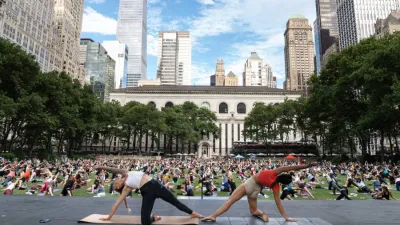Singapore's remarkable rise in life expectancy, driven by government policies on health, green spaces, and social cohesion, has earned it the distinction of being named the world's sixth “Blue Zone.”

Singapore has seen a remarkable rise in life expectancy, with residents now expected to live to more than 86 years, a significant leap from the 1960s when life expectancy was just 65. As reported by Lindsey Galloway, the city-state’s transformation has been driven by forward-thinking government policies focused on health, wellness, and longevity. Singapore was named the world’s sixth “Blue Zone” in August 2023, a designation typically reserved for regions where people live longer due to lifestyle, culture, and community. Unlike other Blue Zones, Singapore’s success is rooted in its intentional policies rather than long-standing traditions.
Health-conscious policies, such as high taxes on cigarettes and alcohol, public smoking bans, and initiatives to encourage healthier diets, have significantly impacted public health. Residents like Firdaus Syazwani have noticed changes in the community’s health consciousness, with government measures like nutritional labeling and sugar reduction playing a role. Singapore’s healthcare system is globally recognized, ranked the best in the world for citizen health and access to care. Universal healthcare, combined with private services and savings funds, ensures a balance between quality care and affordability.
Beyond healthcare, Singapore’s focus on green spaces, public parks, and efficient urban planning fosters physical activity and community connection, which are essential for a long, healthy life. The Urban Redevelopment Authority’s integration of parks and nature into the cityscape has earned Singapore its reputation as a “garden city.” Public parks, fitness areas, and gym classes are easily accessible, providing residents of all ages with opportunities to stay active. Iconic spots like the Singapore Botanic Gardens, a UNESCO World Heritage site, exemplify the country's commitment to environmental sustainability and community well-being.
While Singapore is celebrated for its high quality of life, it is also one of the most expensive places to live. The government enforces strict laws to maintain social cohesion and safety, making the country clean and secure. Despite the high cost, Singapore’s multicultural society offers rich cultural experiences, from its diverse food scene to its annual festivals. The blend of strong governance, social harmony, and cultural diversity creates a unique environment that attracts both residents and expats seeking a longer, healthier life.
FULL STORY: The world's sixth 'Blue Zone': Why Singapore values both quantity and quality of life

Planetizen Federal Action Tracker
A weekly monitor of how Trump’s orders and actions are impacting planners and planning in America.

Maui's Vacation Rental Debate Turns Ugly
Verbal attacks, misinformation campaigns and fistfights plague a high-stakes debate to convert thousands of vacation rentals into long-term housing.

Cuomo Is the Candidate of Both NIMBYs and Developers. What Gives?
In the New York City mayoral race, odd bedfellows align to preserve the housing status quo.

The Subversive Car-Free Guide to Trump's Great American Road Trip
Car-free ways to access Chicagoland’s best tourist attractions.

San Antonio and Austin are Fusing Into one Massive Megaregion
The region spanning the two central Texas cities is growing fast, posing challenges for local infrastructure and water supplies.

Charlottesville Temporarily Has No Zoning Code
A judge ordered the Virginia city to throw out its newly revised zoning code, leaving permitting for new development in legal limbo.
Urban Design for Planners 1: Software Tools
This six-course series explores essential urban design concepts using open source software and equips planners with the tools they need to participate fully in the urban design process.
Planning for Universal Design
Learn the tools for implementing Universal Design in planning regulations.
Heyer Gruel & Associates PA
JM Goldson LLC
Custer County Colorado
City of Camden Redevelopment Agency
City of Astoria
Transportation Research & Education Center (TREC) at Portland State University
Jefferson Parish Government
Camden Redevelopment Agency
City of Claremont





























